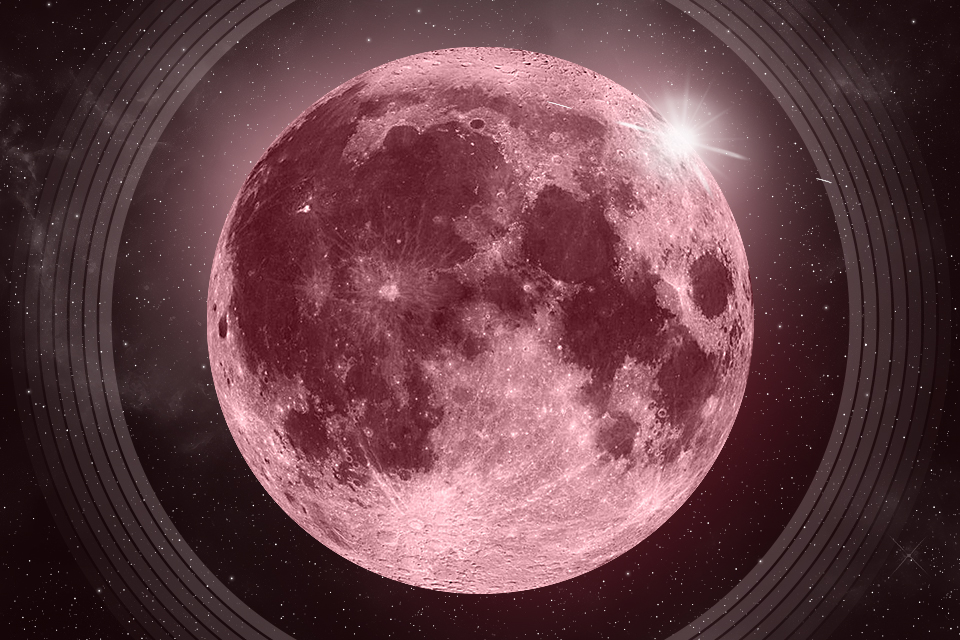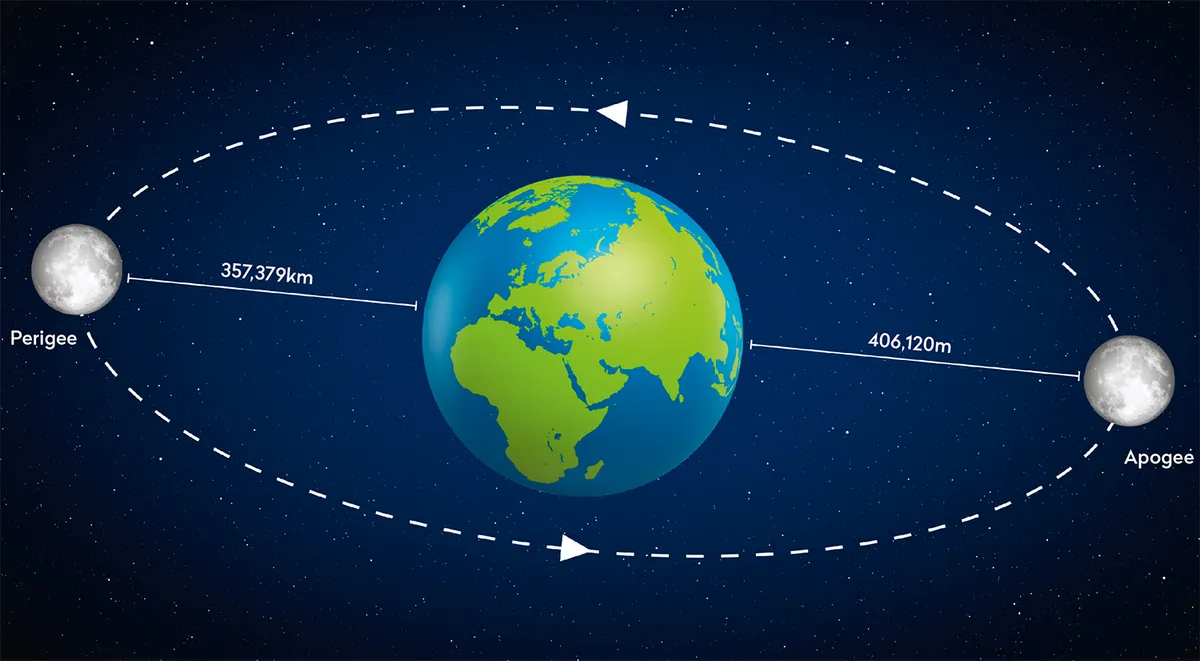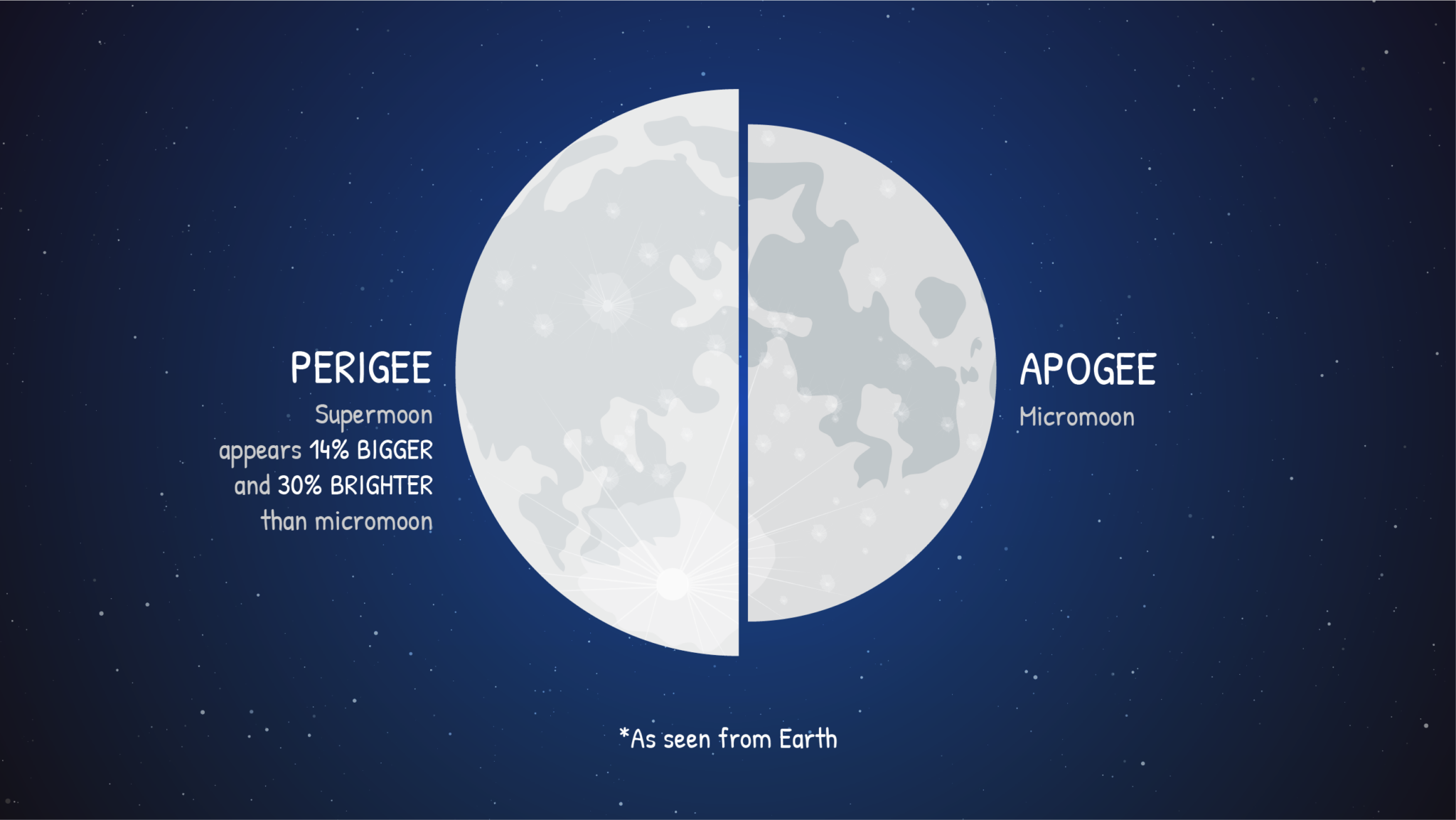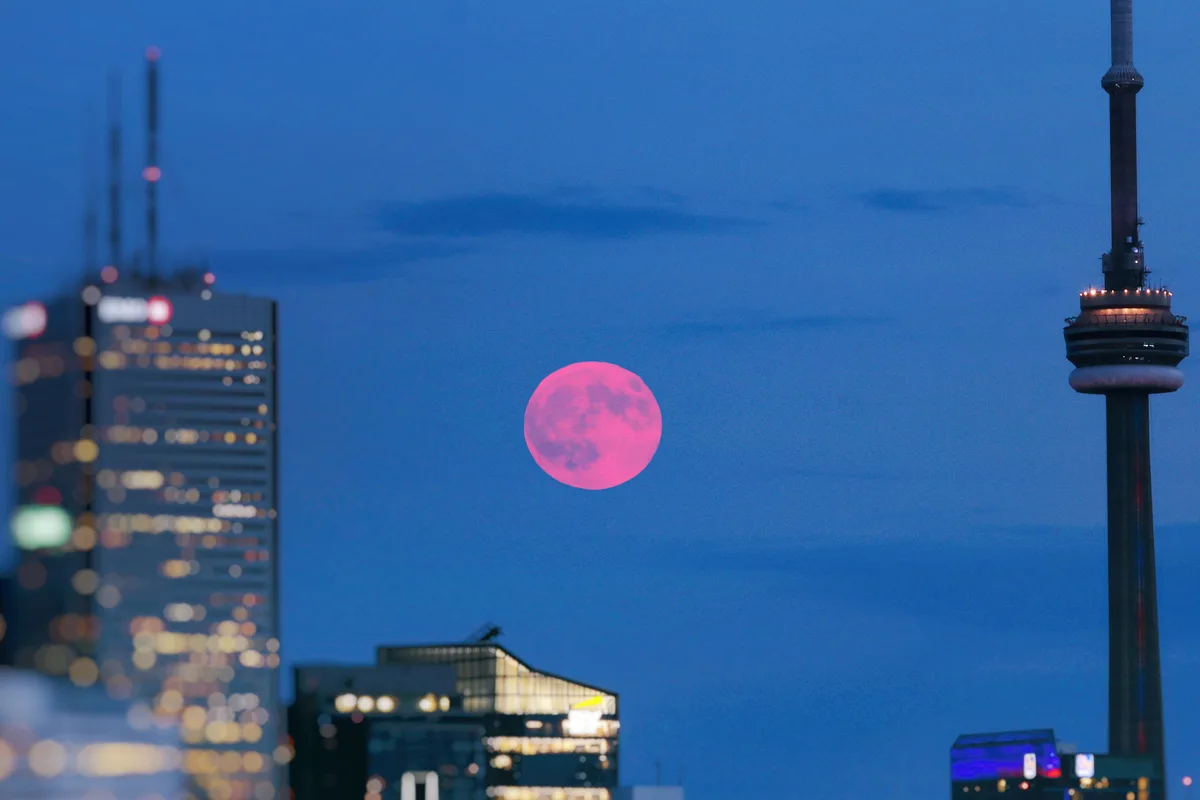On April 13, there will be another Full Moon, which is called the Pink Moon in some sources. But, although in reality the color of our planet’s companion won’t change, the upcoming event is interesting for several reasons. First, this Full Moon is also an Easter Full Moon, as it determines the date of the celebration of Easter by the Catholic and Protestant churches. And secondly, it will be a Micromoon, as the visible size of the Moon will be slightly smaller than usual.

From our material you will learn how the Pink Full Moon got its name and how to observe it.
Pink-Easter Full Moon
The April Full Moon is quite often referred to as the Pink Moon. The name has nothing to do with the Moon’s color change — it will be the same as always. It came to us from the United States. It is stated that the name has folk roots. In April, the first phloxes begin to bloom in North America — hence the Pink Moon.

But in reality it and other names like Snow Moon or Hunter’s Moon were popularized in the 1930s by Old Farmer’s Almanac, a publication for farmers. It called them all “folk” without specifying which ethnic group it was referring to. The funny thing is that in reality, no indigenous people in North America use the name. For example, the Cherokee call it the Flower Moon. Other regions have their own traditional names for the April Moon. For example, in China, it is called the Peony Moon, and in the Southern Hemisphere, it is called the Harvest Moon or the Hunter’s Moon.
From a cultural perspective, the most appropriate name for our April Full Moon is the Easter Moon. The point is that it determines the date of Easter in the Catholic and Protestant churches. According to tradition, it is celebrated on the first Sunday after the first Full Moon after the vernal equinox. Therefore, in 2025 Easter will fall on April 20.
Micromoon 2025
As we said, the April Full Moon is interesting not only because it determines the date of Easter, but also due to what happens when the Moon passes the apogee of its orbit. At the time of its occurrence the satellite will be at a distance of about 406,000 kilometers from our planet. This event is called a Micromoon. For comparison, when the Moon passes the perigee of its orbit during a Full Moon, the distance between it and the Earth is about 356,000 kilometers. Such an event is called a Supermoon.

But how big is the difference? On April 13, the apparent size of the Moon will be about 5.1% smaller than average. When compared to the Supermoon, the numbers look even more impressive. In a Supermoon, the lunar disk is 14% larger and 30% brighter than in a Micromoon.

Many observers claim to be able to spot the difference, and the Moon actually looks noticeably larger and brighter in a Supermoon than in a Micromoon. But it’s actually quite difficult for the human eye to notice this difference. The moon seems especially large at the moment of its rising or setting, when we see it near the horizon against the background of some objects. This phenomenon is called the lunar illusion. It is always observed, whether it is a Micromoon or a Supermoon.
When the Pink Full Moon comes.
Like any other Full Moon, the 2025 Pink Full Moon has an exact date. It will occur on April 13 at 00:22 a.m. World Time. At this point, the maximum phase is observed. In Kyiv, at this time, it will be 03:22 a.m., in London — 01:22 a.m. In the United States, it will still be April 12. For residents of the East Coast, the Pink Full Moon will come at 08:22 p.m.

It is not necessary at all to do it exactly minute to minute to observe the Full Moon. After all, the difference between how the Moon will look during its maximum phase and a few hours afterward is minimal. The best time to start observing is during its rising or setting, when it will appear especially large due to the moon illusion.
The rising moon often has a well-defined orange, or even rusty red color. This is due to several factors. When the Moon is near the horizon, reflected sunlight has to travel a longer path through the Earth’s atmosphere. This causes its blue and purple components to be almost completely removed. The state of the atmosphere — its dustiness and/or the presence of smog — also plays a role.
In the case of the Pink Full Moon, the Moon will rise during Sunset. Therefore, due to the sunset its disk can acquire an even more pronounced red color than usual, which will add to the spectacle of a special effect. For example, on April 12 in Kyiv, the Moon will begin to rise above the horizon at 07:28 p.m., and the Sun will set at 07:39 p.m. Similarly, on April 12 in London, the Sun will set at 07:52 p.m. and Moonrise will begin at 07:40 p.m. local time. In New York City, the Sun will set at 7:33 p.m., at which time the Moon will begin to rise above the horizon at 7:31 p.m. local time.

Immediately after appearing in the sky, the Moon will be in the constellation Virgo near its brightest star, Spica. Residents of Latin America, the Caribbean and the south of South Africa will even be able to see the star’s coverage. True, seeing Spica next to the blindingly bright Moon can be quite challenging. Therefore, it is best to use binoculars or a telescope for observations.
The next Full Moon will take place on May 12. We will be sure to share with you the most interesting facts about it and the best time to observe it.


